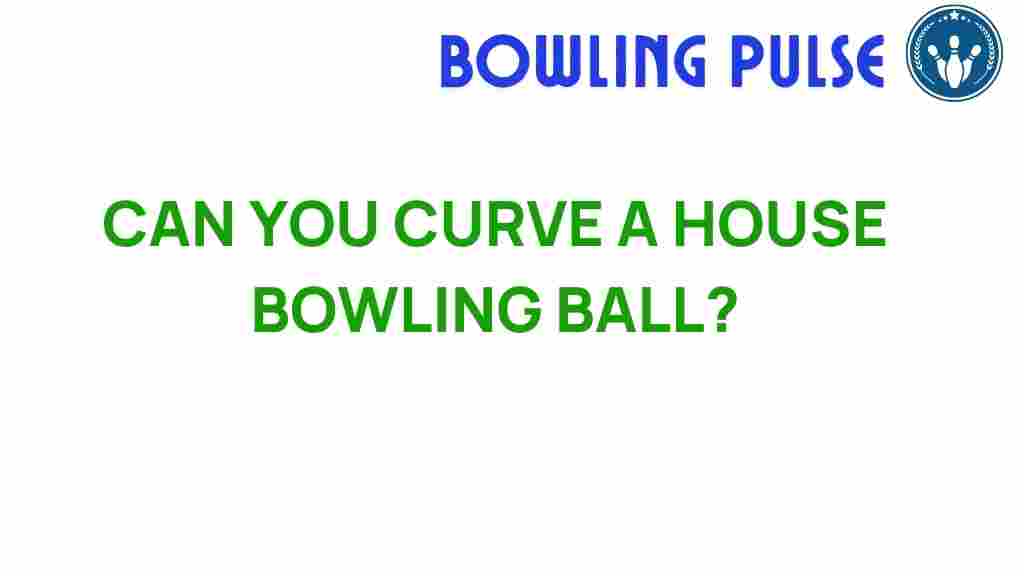The Art of the Curve: Mastering the House Bowling Ball
Bowling is more than just a pastime; it’s a blend of sport, skill, and strategy. Whether you’re a seasoned pro or a casual player, mastering the curve bowling ball technique can elevate your game significantly. While many bowlers start with a standard house bowling ball, understanding the intricacies of bowling techniques can lead to better accuracy and performance on the lanes.
Understanding the Basics of Bowling
Before diving into the art of curving a bowling ball, it’s essential to grasp the fundamentals of bowling. This includes knowing your equipment, the bowling lane, and the physics that play a crucial role in every roll.
- Bowling Ball Types: There are different types of bowling balls, including plastic, urethane, and reactive resin. A house bowling ball is typically made of plastic or urethane and is designed for casual use.
- Bowling Lane Conditions: The oil pattern on the lanes affects how the ball behaves. Understanding these patterns can help you adjust your approach.
- Bowling Physics: The angle of release, speed, and rotation all influence the ball’s path and how it interacts with the pins.
Step-by-Step Process to Mastering the Curve Bowling Ball
Now that you have a grasp of the basics, let’s delve into how to master the curve bowling ball. Follow these steps to enhance your skills:
Step 1: Choose the Right Ball
While a house bowling ball is convenient, choosing a ball that fits your hand properly and has a suitable weight is crucial. A ball that’s too heavy or light can hinder your ability to control the curve.
Step 2: Grip the Ball Correctly
The grip is fundamental when throwing a curve. Use a relaxed grip; your fingers should be inserted in the holes up to the second knuckle, and your thumb should fit snugly without being too tight.
Step 3: Approach and Stance
Your approach is vital for executing a successful curve. Follow these tips:
- Position: Stand with your feet shoulder-width apart, with your knees slightly bent.
- Alignment: Aim for a mark on the lane, typically located a few feet in front of the foul line.
- Timing: Synchronize your steps with your arm swing for a smooth delivery.
Step 4: The Delivery
The delivery is where the magic happens. Here’s how to achieve a proper curve:
- Release Point: Maintain a consistent release point. Ideally, release the ball at the lowest point of your swing.
- Rotation: To create a curve, impart spin by rotating your wrist. Your palm should face upwards during the release.
- Follow Through: Extend your arm towards your target after releasing the ball to enhance accuracy.
Step 5: Adjusting for Lane Conditions
Every bowling session can present different challenges. Pay attention to how the ball reacts on the lane and adjust your technique accordingly. If the ball isn’t curving as expected, consider:
- Changing your stance or position on the approach.
- Adjusting your grip or release technique.
- Observing the oil pattern and how it might be affecting the ball’s trajectory.
Troubleshooting Common Issues
Even the best bowlers face challenges. Here are some common issues and how to troubleshoot them:
- Ball Hooking Too Much: If your ball is hooking too much, consider reducing the speed of your throw or changing your wrist position during the release.
- Ball Not Hooking Enough: To increase the hook, ensure you’re applying enough spin and check your approach for any inconsistencies.
- Inconsistent Accuracy: Focus on your follow-through and ensure you’re aiming at the same target each time.
Bowling Tips for Improvement
To truly master bowling and enhance your sports skills, consider these additional tips:
- Practice Regularly: Consistent practice is key to mastering any skill, including the curve bowling ball.
- Watch the Pros: Observe professional bowlers and note their techniques. You can learn a lot about bowling accuracy and style from the experts.
- Join a League: Participating in a bowling league can provide valuable experience and help you learn from other players.
- Seek Coaching: If possible, consider hiring a coach or taking lessons to refine your technique.
The Science Behind the Curve
Understanding the physics of bowling can significantly enhance your performance. Here’s a brief dive into the science:
- Angular Momentum: The spin you apply to the ball creates angular momentum, which affects its trajectory and how it interacts with the pins.
- Friction: The ball’s surface interacts with the lane’s oil pattern, creating friction that influences how sharply the ball hooks.
- Gravity: As the ball rolls down the lane, gravity plays a role in its speed and direction.
By mastering these aspects of bowling physics, you can improve your performance and enjoyment of recreational bowling.
Conclusion
Mastering the curve bowling ball technique is an art that combines skill, practice, and an understanding of the fundamentals of bowling. By following the steps outlined in this article, you can improve your bowling accuracy and performance on the lanes. Remember that like any sport, mastering bowling takes time and dedication. Embrace the journey, practice often, and soon enough, you’ll find yourself consistently throwing that perfect curve.
For more tips and resources on improving your bowling game, check out our bowling techniques guide. To understand the physics behind bowling better, refer to this external resource that delves deeper into the subject.
This article is in the category Techniques and created by BowlingPulse Team
